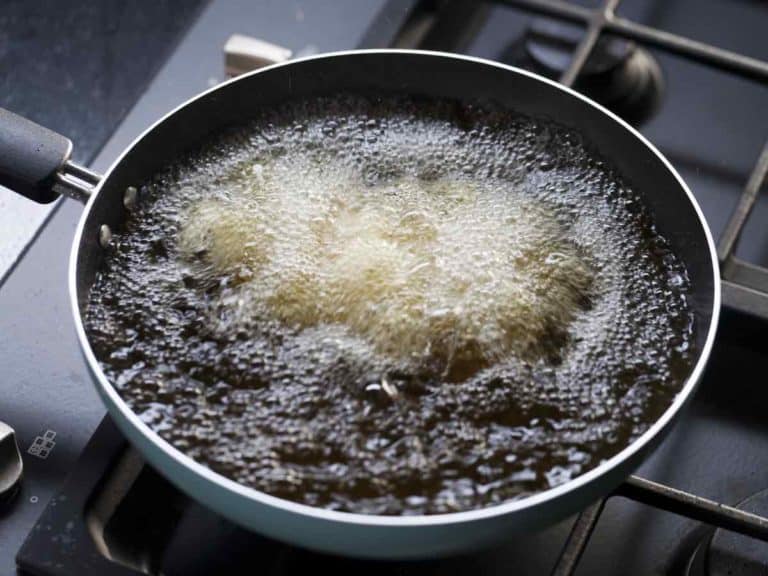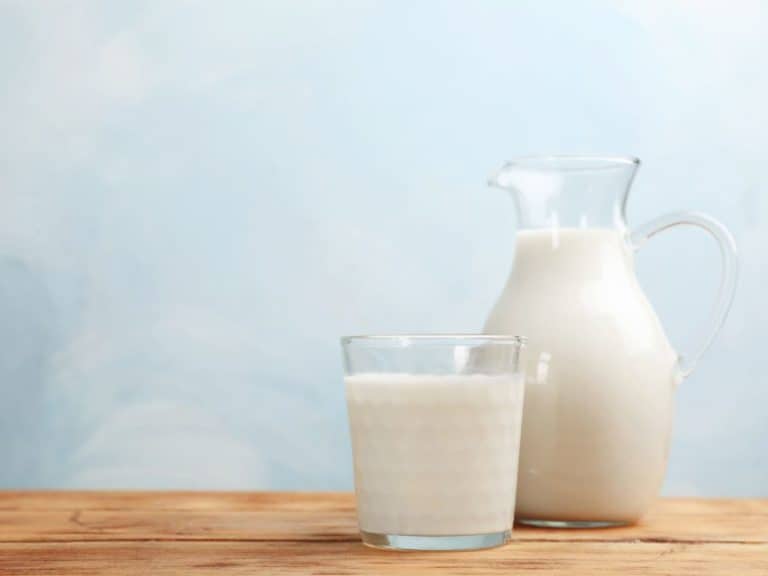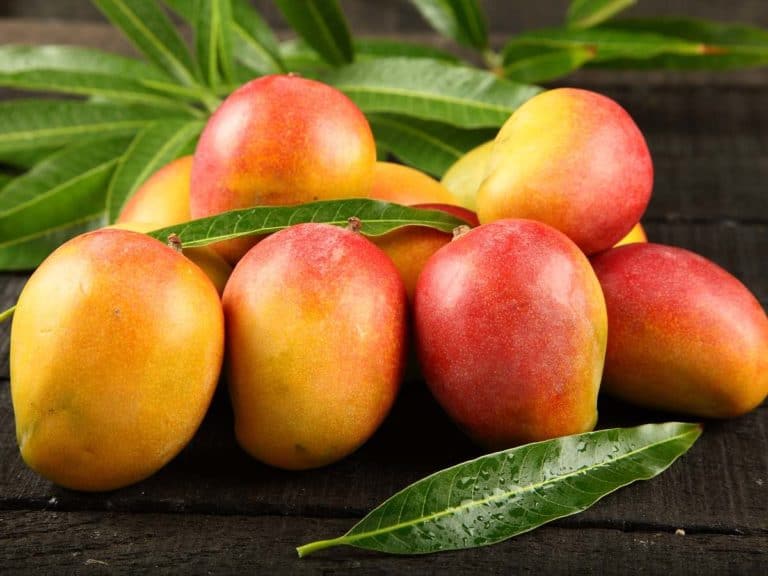Difference Between Pasta And Noodles: Complete Guide
Noodles and pasta are both essentially made with flour and water. The two of them can be cooked in boiling water. You can find them served in a wide assortment of dishes.
They have plenty of similarities—yet would they say they are the same thing?
According to the National Pasta Association noodles must contain 5.5 percent egg solids in their content. Noodles are thick and can be added to soups without losing consistency. Dried pasta, on the other hand, usually has no base egg content and can be stored for years.
In case you’re thinking about what they share in like manner—and where they vary—this is the article for you.
Difference Between Pasta And Noodles
Are noodles pasta?
Is pasta a sort of noodle?
Are the qualifications even huge?
These are largely questions we’ve asked ourselves when we’re taking a gander at plans and choosing if we can utilize the spaghetti in the cabinet as opposed to going out to purchase egg noodles.
We regularly consider noodles when we consider Asian food and pasta when we consider Italian cooking. It’s not exactly so basic, nonetheless, because we likewise utilize the word ‘noodle’ to portray sorts of pasta, for example, ‘spaghetti noodles.’
The word ‘noodle’ isn’t even of Asian origin; it’s an idea to get from an old German word!
Indeed, while we will regularly utilize egg noodles for sautéed food and spaghetti for a bolognese, more key contrasts make noodles and pasta.
So what, then, at that point, is the genuine distinction?
Everything boils down to the fixings, as opposed to whether you’re cooking a ragu or ramen!
Egg content is the essential differentiation among noodles and pasta. Truth be told, there are exact measures that must be met for an item to be marked as pasta or noodles in the USA formally.
Pasta, then again, has no base egg content. The Italian government, however, will possibly permit items to be named as pasta in case they are produced using durum wheat, the conventional element of decision for Italian pasta. It’s as yet not straightforward, be that as it may because new pasta regularly contains egg.
Noodles
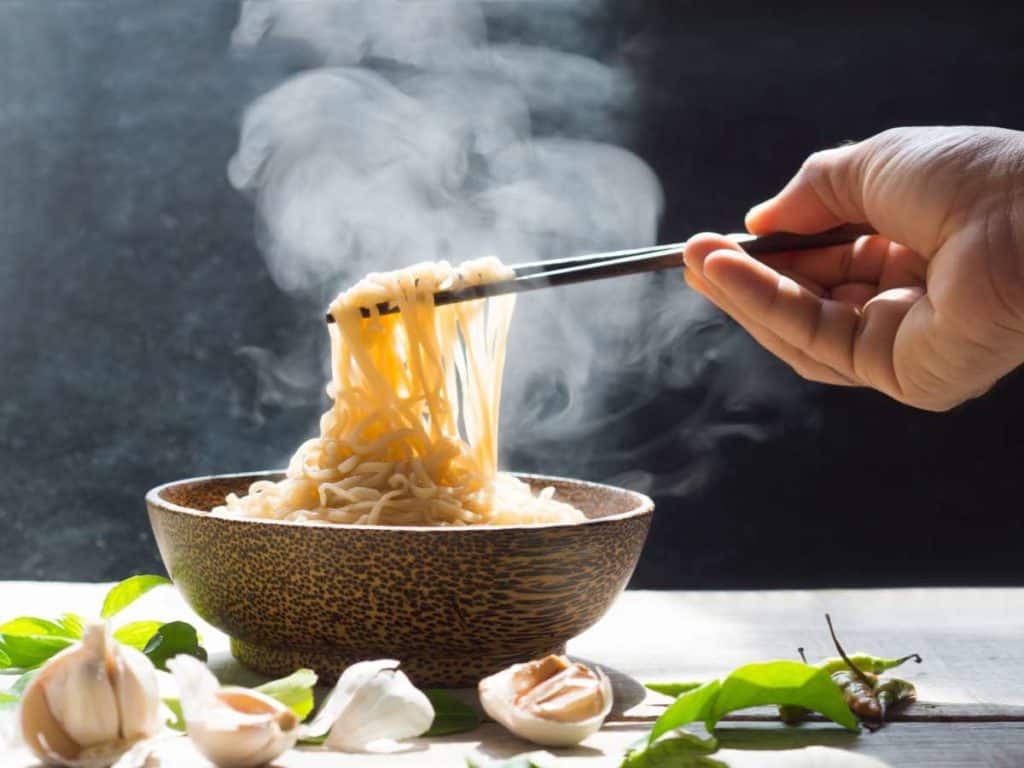
Have you at any point plunked down to a generous chicken soup loaded up with scrumptious noodles?
Believe it or not—those are noodles. Perhaps you got ‘lo mein’ at your #1 café, or halted in for some ‘udon’? Those are noodles, as well.
So what makes a noodle a noodle?
The National Pasta Association characterizes noodles as containing essentially 5.5 percent egg solids in their cosmetics. Noodles are thick and can be added to soups and galoshes without turning into a wet wreck.
Noodles—named after the German word “nudel” and the Latin word “nodus”— are made with an unleavened mixture and are ready in bubbling water. Noodles contain a high measure of carbs, which makes them an ideal hotspot for an increase in energy.
Noodles can come in any shape however are most habitually seen in long, slight, strips or bars. It’s hard to pinpoint where the noodle came from correctly, yet it’s accepted to have started in China during the Eastern Han Dynasty.
In 2005, archeologists there uncovered a bowl of noodles going back 4,000 years. Regardless of whether that is the first occasion when they showed up or not, we do realize noodles voyaged toward the west.
Ultimately, they would turn into a staple food, accessible around the world.
Noodles can be produced using an assortment of food sources, including mung beans, potato, buckwheat, wheat, oak seed, and rice. The flour utilized in noodle making is generally a better flour than that used to make pasta assortments.
The processed flour used to make noodles leaves you with a light-hued, smooth finished item. When cooked, they will in general be exceptionally delicate—no genuine gnawing or biting ought to be essential when eating noodle dishes.
Like pasta, noodles start as a batter. In the wake of combining as one the fixings and plying the mixture, it’s rolled very meagerly. This interaction should be possible in an assortment of ways by hand, including conventional strategies, or by utilizing a moving pin.
When the mixture has been moved slightly, the noodles are cut into their last shape. At the point when the noodles have been cut, you’re allowed to cook them quickly or store them for some time in the future.
A primary ingredient in a wide range of kinds of dishes from everywhere the world, noodles can be served in hot or cold dishes. Noodles can likewise be singed, served in soups, or bubbled as a primary dish to be presented with meat or vegetables.
Noodles can shift enormously in taste, contingent upon how much salt has been utilized and what their unique source was. The additional salt mellows the gluten proteins and takes into account that exemplary pliable noodle. Noodles are adaptable and supplement a variety of flavors.
Still a staple in Asian nations—and numerous others—noodles are delectable, filling, and economical.
Pasta

The greater part of us considers pasta starting from Italy, however, that is not the situation. Pasta initially came from Arabia.
The word pasta, however, comes from an Italian word that implies glue. This name comes from the way toward making the pasta mixture—the progression that occurs before the pasta transforms into the shapes we know and love as farfalle, ziti, rigatoni, and the sky is the limit from there.
Like noodles, pasta is made with an unleavened mixture. New pasta can be made with eggs and kept in the fridge for a couple of days. The greater part of us, notwithstanding, are more acquainted with dried pasta. Dried pasta, without eggs, can be kept on a rack for as long as two years.
Pasta is made with a wheat—durum wheat solely in case you’re in Italy—and can contain vegetable concentrates. Some pasta dishes include stuffing the pasta, similar to gnocchi and ravioli.
In contrast to noodles, pasta shapes have unmistakable names and are utilized for explicit kinds of suppers.
When cooking pasta, the objective is to have a firm, or still somewhat firm, completed item. The pasta ought not to be soft. All things being equal, you’re searching for something that holds its shape and gives the sensation of a fresh nibble being taken.
Crunchy, half-cooked, pasta isn’t the thing you’re searching for. This can make the basic demonstration of cooking pasta more troublesome than you may have envisioned.
While pasta, similar to noodles, can be made with salt added, the salt is commonly utilized during an alternate advance in the cooking cycle. Utilizing salt during various phases of cooking impacts how it will function in the formula.
Salt is utilized with noodles during the creation of the batter to change the construction of the completed item.
When adding salt to enhance the water and pasta—ordinarily during bubbling, yet in addition in sauces and the completed item—it is rigorously to improve the flavor.
With more than 200 kinds of pasta—accessible in more than 300 unique shapes—pasta dishes can be served cold or warm in a wide range of sauces and introductions. Pasta has become a foundation in ethnic cooking styles all over the place.
How To Make Noodles
Let’s take a look at how noodles are made to perceive what recognizes them from pasta.
Your common noodles are long, contain eggs, and dropped from the first noodles of eastern China. Archeological proof has shown those noodles date back similarly to 4000 BC. Noodles are customarily hand-pulled, however can likewise be made utilizing machines, including a pasta producer.
You take a base of flour and add eggs to make a mixture. The batter is then smoothed out and cut into long, slight strips.
Noodles are staggeringly fluctuated, however, because the sort of flour you use can be processed from an immense scope of fixings. The kind of flour that is utilized will regularly rely upon the geological area from where the noodle starts.
No meaning of noodles is finished without referencing that there is a wide range of kinds of noodles. There are however many kinds of noodles as there are sorts of pasta! For instance, you can make rice noodles from rice flour, buckwheat noodles from buckwheat, or you can make egg noodles from wheat flour and egg.
Noodles can be carefully assembled and cooked new or locally acquired, dried, or dried out. You can sear or bubble noodles. You’ll see that noodles are the fundamental element for pan-sears, ramen, noodle soups, and a lot more tasty dishes.
How To Make Pasta
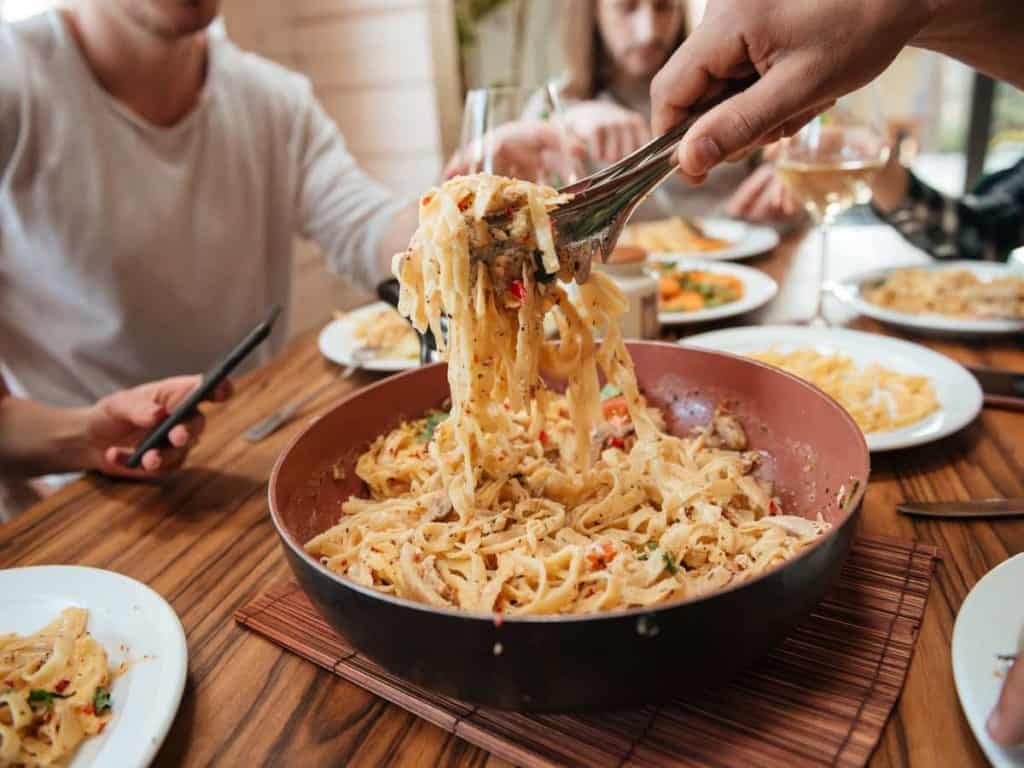
Pasta is made utilizing a comparable cycle to noodles, however, the fixings vary. The fixings are maybe more explicit, as pasta ought to customarily be delivered uniquely from durum wheat.
The durum wheat is ground into flour and transformed into a batter utilizing water and eggs (albeit currently dried pasta doesn’t contain any eggs). The mixture is then smoothed and cut up into the ideal pasta shape.
While noodles are by and large long, pasta has numerous assortments of shapes. The most well-known variation is the length.
Short pasta would be penne or fusilli, while long pasta incorporates spaghetti and fettuccine. Pasta is regularly thought to have begun in Italy, as this is the home of numerous exemplary pasta dishes that we appreciate.
Yet, pasta is in reality a lot more established than dishes like bolognese or ragu and can be followed back to the Arab world.
We regularly bubble pasta or heat it in the broiler (lasagna, for example). It’s uncommon at any point to sear pasta like you would sauté noodles, and pasta is more usually shrouded in a sauce than part of a soup.
Using Pasta Instead Of Noodles
Since they are practically the same, it’s somewhat simple to substitute noodles for pasta. The meaning of pasta is rather free, so don’t be reluctant to get imaginative. Go off the deep end and use spaghetti rather than noodles in your sautéed food!
Every so often, certain dishes will require explicit noodles or kinds of pasta. Assuming you need thick noodles for your ramen, you need to utilize udon for realness, as no pasta is very that thick. Assuming setting up a messy macaroni, you’ll presumably pick macaroni for the shape and surface for custom.
At last, it’s truly down to individual taste and decision. Which kinds of noodles or styles of pasta do you lean toward best?
Types Of Pasta
Despite the main genuine notice of the Italian staple tracing back to the thirteenth century, today pasta is one of the world’s most famous food sources. It’s adaptable, advantageous, and fulfilling – and there are countless various sorts to browse…
Spaghetti
Maybe perhaps the most famous pasta type on the planet, spaghetti comprises of long, slight noodles which can be matched with a wide assortment of sauces.
Perhaps the most notable dish is Spaghetti Bolognese, where pasta is matched with meat in a marinara sauce. This kind of pasta suits meat and vegetable dishes of any kind, or even garlic and olive oil.
Penne
Another mainstream shape, penne has a round, tube-like construction, with inclining cuts at one or the flip side. That is the reason it’s best served in dishes that have a somewhat thick, velvety sauce as it enters the cylinder and holds the sauce well, like Penne Arrabbiata. This is additionally the best kind of pasta to use in pasta heat dishes.
Lasagna
As opposed to prevalent thinking, lasagne is the name of the flimsy sheets of pasta that make up a dish, instead of the actual dish.
Lasagne is utilized in stove-prepared dishes with the most notable dish being lasagne al Forno, which probably involves a hamburger or pork ragu, layered between layers of lasagne and béchamel sauce, finished off with cheddar. This dish can be adjusted to contain any sort of filling you like, for example, mushrooms rather than meat.
Ravioli
Ravioli are cushion-formed squares of mixture that can do anything. They can be loaded up with cheddar, fish, meat, or veggies and finished off with sauce, served in soups, or just sprinkled with olive oil.
Linguine
The same as any semblance of spaghetti, linguine is somewhat complimented and is viewed as more extravagant. The additional surface region implies that it is ideal for matching with lighter surfaces, similar to cream-based sauces or fish.
Types Of Noodles
Noodles, in the entirety of their various shapes, tones and surfaces structure the premise of different Asian forte dishes. There are around eight distinct sorts of noodles – from the round to the level noodles to the string assortment, you can take your pick from the wide assortment accessible on the lookout.
Here’s an abject on the various sorts of noodles you can use in your cooking:
Egg noodles
Quite possibly the most well-known noodles utilized in Asian cooking, these noodles are otherwise called Chinese egg noodles or E-fu noodles. Accessible in an assortment of shapes — thick or flimsy, level or round, new or dried, the fundamental fixings in these noodles are egg and wheat.
Yet, regardless of whether you purchase the new or the dried assortment, egg noodles must be cooked in bubbling water before they can be utilized in any formula. They are ideally suited for a wide scope of dishes including plates of mixed greens, soups, and fundamental courses.
Ramen noodles
In the Japanese understanding of egg noodles, the long and wavy ramen noodles are produced using egg and wheat and dried to shape a block. Ramen noodles are refrigerated until prepared to utilize.
Additionally, when bubbled they must be burned-through right away. One will for the most part discover them utilized in soups other than other principle course dishes.
Udon noodles
These noodles, also called white Japanese wheat flour noodles, structure a vital segment of South Japanese food. They are accessible in different shapes and thicknesses and must be cooked in bubbling water before one can utilize them.
You have a moment, dried, pre-cooked and recoil wrapped choices. The ones that taste best, nonetheless, are the newly ready. These noodles are generally utilized in soups.
Soba noodles
A northern Japanese assortment produced using buckwheat, soba noodles are brown in shading. These noodles likewise need earlier bubbling. Generally accessible dried, soba noodles can be utilized in an assortment of both hot and cold dishes.
Mung bean string noodles
These noodles are level or string-like and clear. Made utilizing mung beans, they are additionally referred to as cellophane or glass noodles. Even though they are difficult to cut when dry, they get delicate when splashed or cooked in bubbling water.
On complete cooking, they transform into straightforward strings. Another intriguing component of these noodles is that they puff up on searing.
Rice stick noodles
Rice stick noodles are level and clear and can be either wide or thin. They are not hard to spot and they are normally sold in groups. The sort you pick is subject to the thickness that you would need to use in your particular formula. These noodles work best in dishes like sautés, soups, and mixed greens.
Hokkien Noodles
Thick in surface and yellow in shading, these noodles are ready from egg and wheat flour. Utilized generally in grouped Asian luxuries, these noodles are now precooked and gently oiled when sold. Hokkien noodles taste best when ready in pan sear noodle dishes, curry noodles, and soup noodles.
Shirataki noodles
These noodles, made of the Konjac plant are slender and clear.
Curiously, the noodles, a Japanese variation, are low on both, calories and carbs and are a generally excellent choice for those searching for a low calorie and low carbs diet.
Related Article: Difference Between Lo Mein, Mei Fun and Chow Fun
